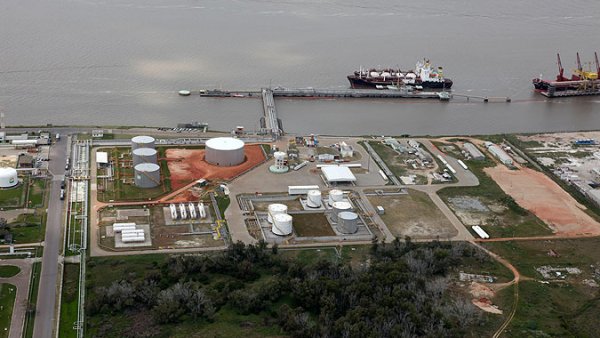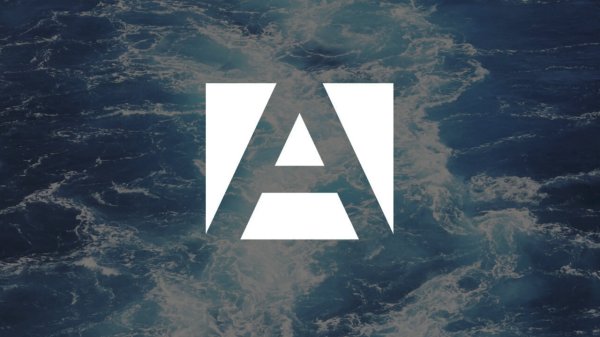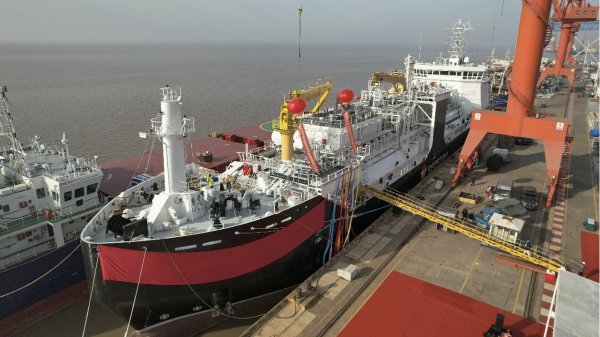High demand for Chemoil in Gulf of Mexico
Supplier says increase is due to more vessels seeking to create cost efficiencies.
Physical bunker supplier Chemoil has experienced substantial demand for its offshore supply service in the Gulf of Mexico during its first year of operation, the company says in a statement issued today.
According to the SGX-listed company, the surge has been underpinned by increasing numbers of vessels spanning very large crude carriers (VLCC’s), smaller tankers and bulk carriers seeking new ways to create cost efficiencies amid rising fuel costs and higher charter rates.
Since officially launching operations in August 2007 to end a five-year service gap in the US Gulf offshore market, Chemoil has tripled its capacity to over 50,000 deadweight tons (DWT).
According to Chemoil, the decision to raise capacity to this level through chartering a second vessel, the 36,000DWT tanker Nordic Ruth in June 2008 reflects how operators are increasingly realizing significant operational and commercial benefits of combining lightering and refueling activities in one location rather than making costly and time-consuming deviations to refuel in areas such as the Caribbean.
Adrian Tolson [pictured], Chemoil’s Vice President of Sales and Marketing commented: “Ship operators of all sizes are now focusing on where they can maximize efficiencies and reduce costs to alleviate current financial pressures. This is vital as they are operating in tough economic times with volatile and high fuel prices but are still challenged with generating more efficiencies and cost reductions in their supply chain. During the first year of operations in the Gulf of Mexico customer demand has grown steadily and we anticipate that this will continue as more operators convert to refueling offshore for these reasons.
“In addition to combining lightering and refueling activities to optimize efficiency, the offshore service is cost-effective as it avoids the expensive barging fees that ships often encounter in US waters. Furthermore, by working with the same supply partner in both the Gulf of Mexico and the Arabian Gulf – with the addition of Chemoil supply services in Fujairah in early 2008 - operators benefit from the advantages of reliable product supply and high quality operations, all of which keep costs and downtime to a minimum.”
Operated by Chemoil Latin America, the company now charters two vessels that work simultaneously - the 36,000 DWT tanker Nordic Ruth and the original vessel, MY Atlantic - across key locations that include Offshore Galveston, Texas and the Louisiana Offshore Oil Port (LOOP).
Singapore-based BW Shipping Managers Pte Ltd, part of the multinational maritime BW Group, is just one customer that says it has benefited from the service.
Captain Robin Williams, General Manager of Fleet Operations, BW Shipping explained: “Scheduling our VLCCs for bunkers after lightering offshore in the Gulf of Mexico, would often result in considerable deviation to locations in the Caribbean, particularly when vessels were returning to Northern Europe or the Mediterranean. Now by using Chemoil’s offshore bunker service in the Gulf of Mexico, we have actively reduced the need to do this.
"Even on voyages back to West Africa load ports, where refueling in the Caribbean used to be the only option, Chemoil’s competitively priced bunkers in the Gulf of Mexico now provide a more cost effective alternative. We have therefore welcomed this offering as it has helped us to notably boost the efficiency of our operations and manage our fuel costs more effectively on all routes within this region.”
Tolson concluded: “Our operations in the Gulf of Mexico highlight our adaptability and commitment to finding the most effective means of providing quality products and services for our customers amid changing market conditions. As more customers convert to this offshore service, this reaffirms our strategy of developing international supply services in key strategic locations. Together with the success of our Singapore and Fujairah operations we are now in the next phase of development and have the necessary infrastructure and operational capabilities to ensure sustained growth in these regions.”
According to the SGX-listed company, the surge has been underpinned by increasing numbers of vessels spanning very large crude carriers (VLCC’s), smaller tankers and bulk carriers seeking new ways to create cost efficiencies amid rising fuel costs and higher charter rates.
Since officially launching operations in August 2007 to end a five-year service gap in the US Gulf offshore market, Chemoil has tripled its capacity to over 50,000 deadweight tons (DWT).
According to Chemoil, the decision to raise capacity to this level through chartering a second vessel, the 36,000DWT tanker Nordic Ruth in June 2008 reflects how operators are increasingly realizing significant operational and commercial benefits of combining lightering and refueling activities in one location rather than making costly and time-consuming deviations to refuel in areas such as the Caribbean.
Adrian Tolson [pictured], Chemoil’s Vice President of Sales and Marketing commented: “Ship operators of all sizes are now focusing on where they can maximize efficiencies and reduce costs to alleviate current financial pressures. This is vital as they are operating in tough economic times with volatile and high fuel prices but are still challenged with generating more efficiencies and cost reductions in their supply chain. During the first year of operations in the Gulf of Mexico customer demand has grown steadily and we anticipate that this will continue as more operators convert to refueling offshore for these reasons.
“In addition to combining lightering and refueling activities to optimize efficiency, the offshore service is cost-effective as it avoids the expensive barging fees that ships often encounter in US waters. Furthermore, by working with the same supply partner in both the Gulf of Mexico and the Arabian Gulf – with the addition of Chemoil supply services in Fujairah in early 2008 - operators benefit from the advantages of reliable product supply and high quality operations, all of which keep costs and downtime to a minimum.”
Operated by Chemoil Latin America, the company now charters two vessels that work simultaneously - the 36,000 DWT tanker Nordic Ruth and the original vessel, MY Atlantic - across key locations that include Offshore Galveston, Texas and the Louisiana Offshore Oil Port (LOOP).
Singapore-based BW Shipping Managers Pte Ltd, part of the multinational maritime BW Group, is just one customer that says it has benefited from the service.
Captain Robin Williams, General Manager of Fleet Operations, BW Shipping explained: “Scheduling our VLCCs for bunkers after lightering offshore in the Gulf of Mexico, would often result in considerable deviation to locations in the Caribbean, particularly when vessels were returning to Northern Europe or the Mediterranean. Now by using Chemoil’s offshore bunker service in the Gulf of Mexico, we have actively reduced the need to do this.
"Even on voyages back to West Africa load ports, where refueling in the Caribbean used to be the only option, Chemoil’s competitively priced bunkers in the Gulf of Mexico now provide a more cost effective alternative. We have therefore welcomed this offering as it has helped us to notably boost the efficiency of our operations and manage our fuel costs more effectively on all routes within this region.”
Tolson concluded: “Our operations in the Gulf of Mexico highlight our adaptability and commitment to finding the most effective means of providing quality products and services for our customers amid changing market conditions. As more customers convert to this offshore service, this reaffirms our strategy of developing international supply services in key strategic locations. Together with the success of our Singapore and Fujairah operations we are now in the next phase of development and have the necessary infrastructure and operational capabilities to ensure sustained growth in these regions.”

|
IMO approves pricing mechanism based on GHG intensity thresholds
Charges to be levied on ships that do not meet yearly GHG fuel intensity reduction targets. |
|
|
|
||

|
VARO Energy expands renewable portfolio with Preem acquisition
All-cash transaction expected to complete in the latter half of 2025. |
|
|
|
||

|
NYK trials biofuel in milestone coal carrier test
Vessel is used to test biofuel for domestic utility company. |
|
|
|
||

|
H-Line Shipping orders LNG bunkering vessel
Vessel with 18,000-cbm capacity to run on both LNG and MDO. |
|
|
|
||

|
How to engineer and manage green shipping fuels | Stanley George, VPS
Effective management strategies and insights for evolving fuel use. |
|
|
|
||

|
Swedish government bans scrubber wastewater discharges
Discharges from open-loop scrubbers to be prohibited in Swedish waters from July 2025. |
|
|
|
||

|
MAN Energy Solutions achieves 100% load milestone for ammonia engine
Latest tests validate fuel injection system throughout the entire load curve. |
|
|
|
||

|
Petrobras secures ISCC EU RED certification for B24 biofuel blend at Rio Grande
Blend consisting of 24% FAME is said to have been rigorously tested to meet international standards. |
|
|
|
||

|
Stolt-Nielsen to fully control Avenir LNG with acquisition
Share purchase agreement to buy all shares from Golar LNG and Aequitas. |
|
|
|
||

|
Bureau Veritas supports launch of CIMC SOE's LNG bunkering vessel
Handover of Seaspan Energy's cutting-edge 7,600-cbm vessel completed. |
|
|
|
||
Related Links
- · Chemoil acquires terminal in the Philippines [Insights]
- · Chemoil records $21.4m profit increase [Insights]
- · Chemoil adds tanker in Gulf of Mexico [Insights]
- · Chemoil adds third barge in Fujairah [Insights]
-
· Chemoil Middle East DMCC [Directory]
- · United States [Directory]
- · Galveston [Directory]
- · Louisiana (LOOP) [Directory]

